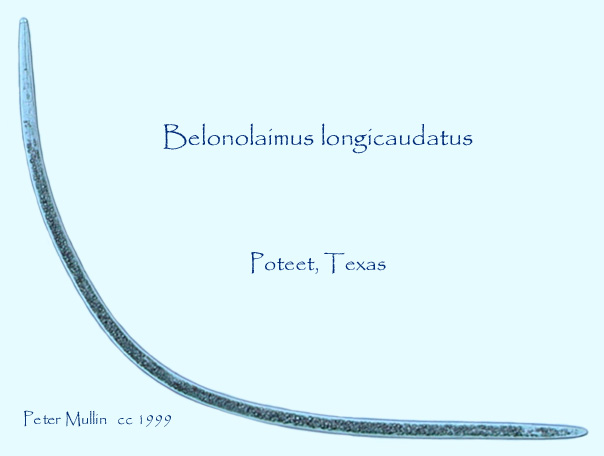Belonolaimus longicaudatus
Sting nematode

Damage to vegetables. Sting nematode is a
damaging pest of a numerous vegetable crops including pepper, tomato,
green bean, onion, squash, cantaloupe and strawberry.
Biology. Adults can reach lengths greater
than 3 mm, making them one of the largest plant-parasitic nematodes. Sting
nematodes are ectoparasites of plant roots, meaning that they feed on the
roots externally, particularly on root tips which are killed, resulting
in little or no new root growth.
Ecology. Belonolaimus
longicaudatus is found primarily in the sandy coastal plains of
the Atlantic and Gulf coasts but also occurs naturally in sandy areas of
some Midwestern plains states such as Kansas and Nebraska.
Symptoms. Plants damaged by sting
nematodes often wilt, may be stunted and may show symptoms of nutrient
deficiency. Seedlings may sprout from the soil and then cease growing altogether.
Sting nematode damage causes a shallow root system of coarse roots with
knobby tips. There is often visible plant top damage as a result
of the root damage.
Damage to other crops. Belonolaimus longicaudatus
is also a damaging pest on corn, soybean and turf grasses.
Control. Crop rotation and nematicides are
control methods.
Links and References. Sting
Nematodes. University of Georgia.
Sting
nematode: the Scourge of Strawberry.
|